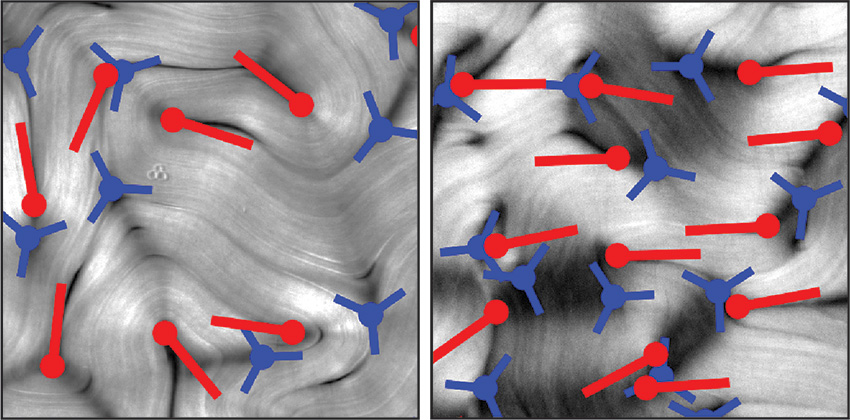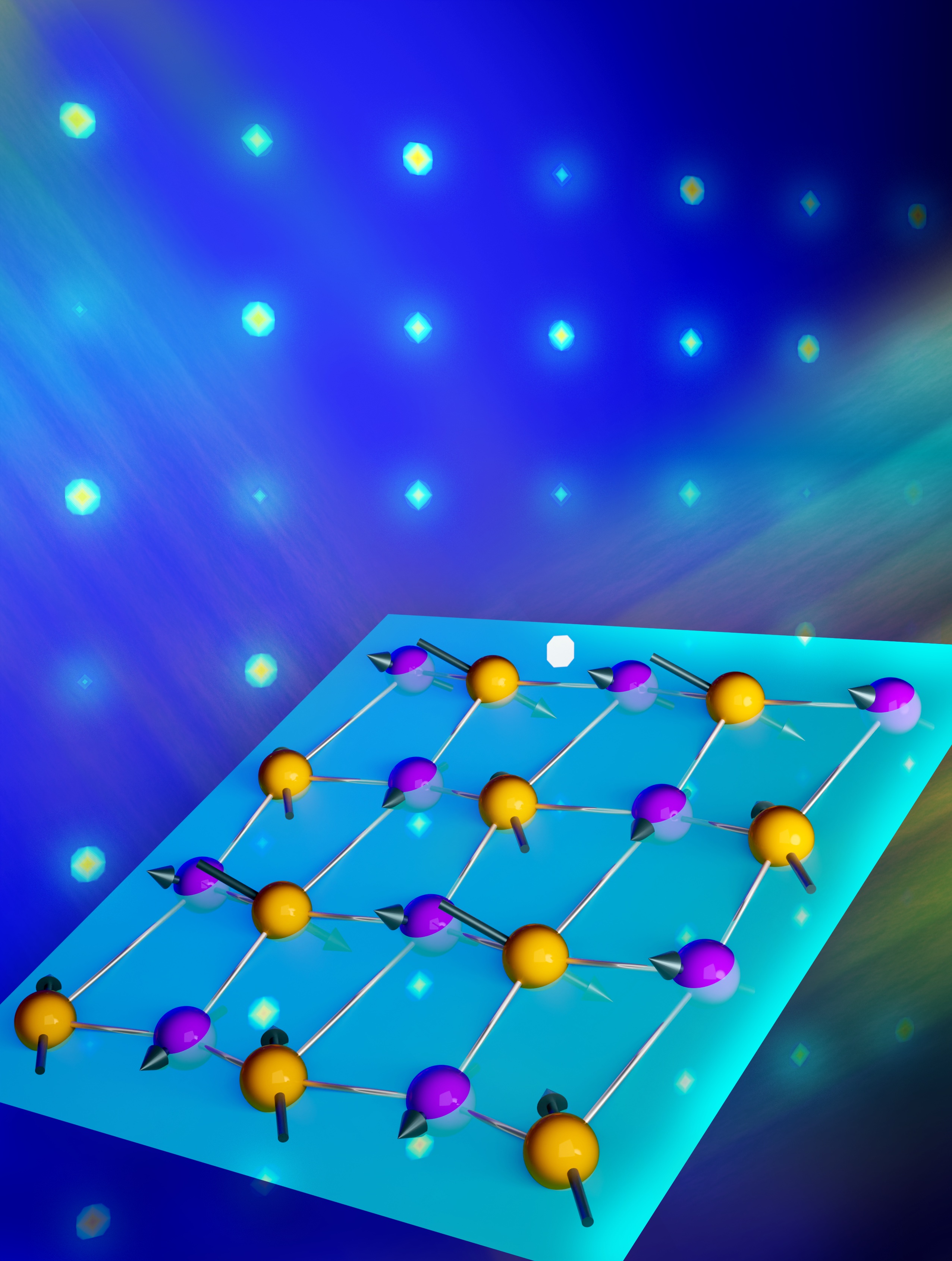Defects Lead to Order
Surprising order found in bundles of protein filaments that move chaotically and form liquid crystals that could led to novel self-healing.

The Science
Surprisingly, defects in flowing liquid crystals organize into ordered assemblies that span the entire system and persist for hours even though the defects are continuously created and destroyed. Such defect-ordering in flowing active systems could lead to materials that self-heal or spontaneously do work.
The Impact
Discovering that defects can lead to order, rather than the expected chaos, in soft materials that are far from equilibrium could write new rules for creating novel materials that respond to environmental cues to dynamically assemble and reorganize. These cell-like properties are hard to achieve in materials with today’s science.
Summary
Cells can move, rapidly reorganize, and replicate as a result of continuous dynamics that are generated by cell components consuming and dissipating energy. Cell-like properties include dynamic responsiveness to environmental cues and spontaneous reorganization of structures. Even though scientists are developing material systems to mimic these capabilities and numerous theoretical models exist for systems that are driven far from a state of equilibrium by autonomous motion, the highly desired goal of incorporating cell-like properties into human-made materials is largely unrealized. Recently, a team from Brandeis University discovered how nanoscale defects that continuously move produce long-range order in flowing matter. This is surprising because movement of defects is commonly assumed to lead to disorder, rather than order. Scientists used specialized microscopes to image the assembly behavior of flowing bundles of protein filaments, whose movement was powered by protein-based biomolecular motors. In these systems, the continuously moving defects oriented the filaments in parallel to loosely arranged liquid crystal-like layers. This behavior is in direct contrast to the non-flowing, equilibrium assemblies of liquid crystals in which defects reduce or eliminate order. Here, the defect-induced long-range order persisted for hours, even though the lifetime of defects was on the order of seconds. This new understanding may advance design rules for fabricating novel “far-from-equilibrium” materials with predefined properties not achievable with conventional materials science approaches.
Contact
Zvonimir Dogic
Brandeis University
zdogic@brandeis.edu
Funding
This work was supported by the U.S. Department of Energy, Office of Science, Office of Basic Energy Sciences (experiments) and National Science Foundation (theory).
Publications
S. J. DeCamp, G. S. Redner, A. Baskaran, M. F. Hagan, and Z. Dogic, “Orientational order of motile defects in active nematics.” Nature Materials 14, 1110–1115 (2015) . [DOI: 10.1038/NMAT4387]
Related Links
Highlight Categories
Performer: University
Additional: Collaborations , Non-DOE Interagency Collaboration



